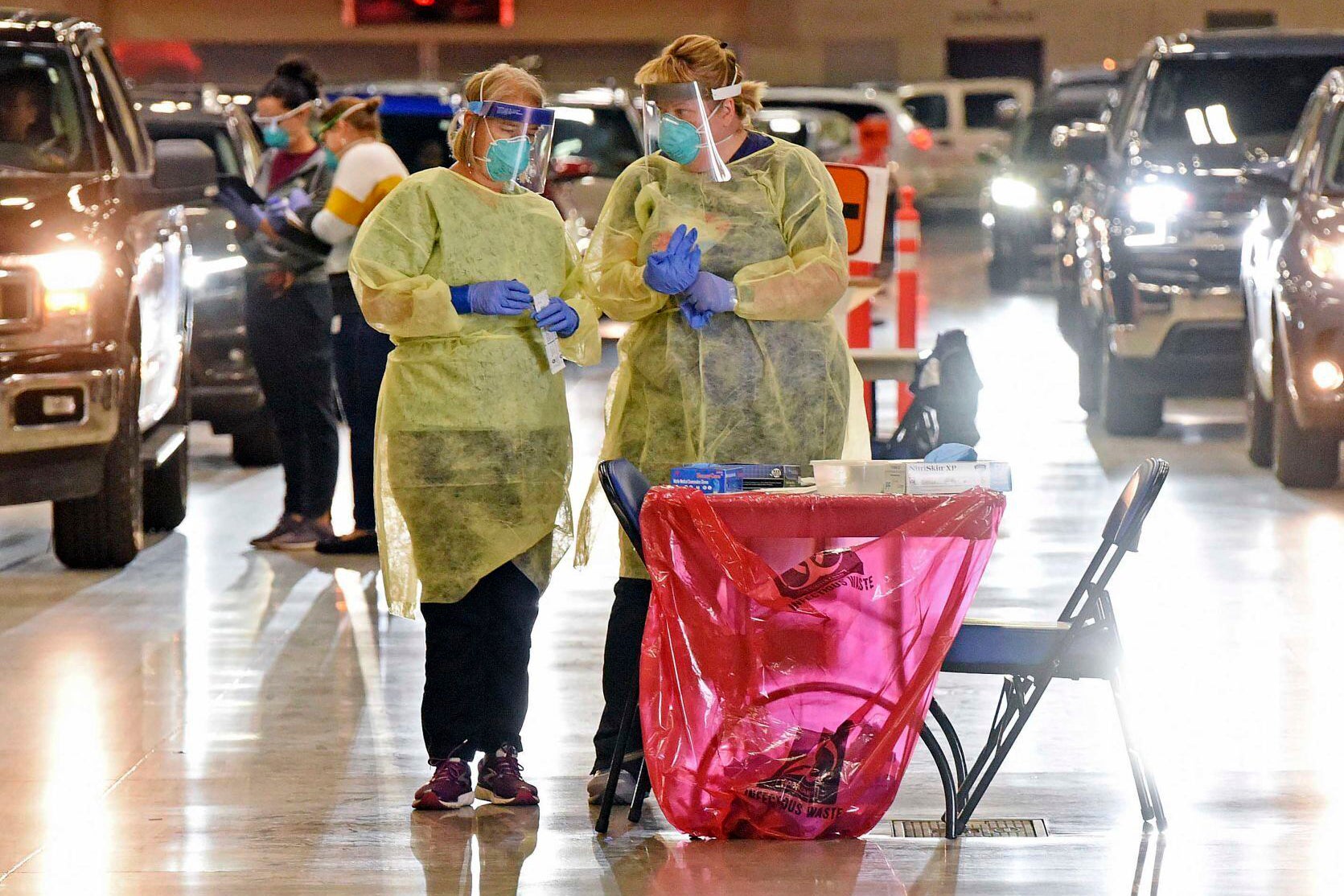Tensions rise as virus cases surge in Wisconsin, Dakotas
A surge of coronavirus cases in Wisconsin and the Dakotas is forcing a scramble for hospital beds and raising political tensions, as the Upper Midwest and Plains emerge as one of the nation’s most troubling hotspots

Your support helps us to tell the story
From reproductive rights to climate change to Big Tech, The Independent is on the ground when the story is developing. Whether it's investigating the financials of Elon Musk's pro-Trump PAC or producing our latest documentary, 'The A Word', which shines a light on the American women fighting for reproductive rights, we know how important it is to parse out the facts from the messaging.
At such a critical moment in US history, we need reporters on the ground. Your donation allows us to keep sending journalists to speak to both sides of the story.
The Independent is trusted by Americans across the entire political spectrum. And unlike many other quality news outlets, we choose not to lock Americans out of our reporting and analysis with paywalls. We believe quality journalism should be available to everyone, paid for by those who can afford it.
Your support makes all the difference.A surge of coronavirus cases in Wisconsin and the Dakotas is forcing a scramble for hospital beds and raising political tensions as the Upper Midwest and Plains emerge as one of the nation’s most troubling hotspots.
The three states now lead all others in new cases per capita, after months in which many residents and politicians shunned mask requirements while downplaying the risks of the disease.
It is increasingly apparent that those choices have come with costs.
In North Dakota which does not require residents to wear masks and whose 770 new cases per 100,000 residents are the highest in the country, 24 more virus deaths reported Wednesday tripled the state’s previous single-day record.
“The reported number of deaths today is heartbreaking,” said Nicole Peske, a spokeswoman for the state Department of Health. “Unfortunately, the deaths and the increase in cases in long-term care are a direct reflection of what’s happening in the community.”
The efforts to combat the quickening spread of the virus in the Midwest and Plains states are starting to recall the scenes that have played out in other parts of the county over the past several months.
In the spring, New York rushed to erect field hospitals as emergency rooms were flooded with desperately ill patients. Then, as Northeastern states got a handle on the outbreak, it spread to Sunbelt states like Arizona, Texas and California over the summer. It then moved into the Midwest.
In Wisconsin, health officials plan to open a field hospital next week at the state fairgrounds to prevent health care centers from being overwhelmed by virus cases, even as state Republicans challenge Democratic Gov. Tony Evers' mask mandate in court.
“We hoped this day wouldn’t come, but unfortunately, Wisconsin is in a much different, more dire place today, and our healthcare systems are beginning to become overwhelmed,” Evers said Wednesday.
In South Dakota, a small hospital with limited capacity to serve the Cheyenne River Sioux Tribe transferred two virus patients out of state after administrators at 14 other facilities said they also were moving patients out.
That contradicted assurances by Gov. Kristi Noem, a Republican, whose plan for combating the virus has focused on increasing treatment capacity rather than preventing the infection. She has insisted that the spread of the disease was inevitable, but criticism of her decision-making is getting louder.
“It is the height of arrogance and ignorance for her to claim her inaction is a badge of honor,” state Democratic Party chairman Randy Seiler said.
Nationwide, newly reported cases have risen in recent weeks to about 44,000 a day, and deaths are running at around 730 a day, according to a tally by Johns Hopkins University.
While those numbers are down from the spring, when cases and deaths peaked at much higher levels, public health experts warn that infections are far too high as the nation moves toward flu season and colder weather that will send more people inside.
___
Geller reported from New York. Associated Press writers Todd Richmond in Madison, Wisconsin, and Dave Kolpack in Fargo, North Dakota, contributed to this story.